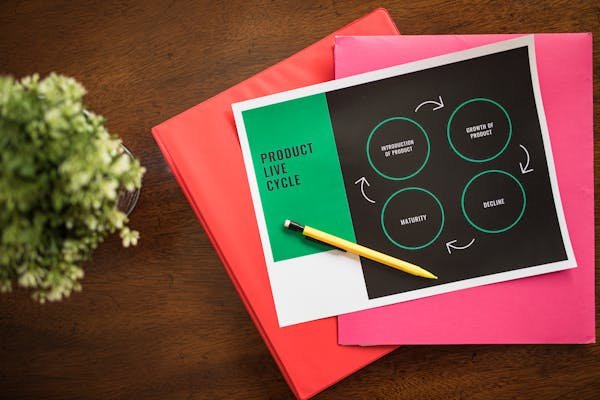Customer churn tells a powerful story. It shows where your product is failing to deliver, where your process is losing people, and what kind of customers you might need to treat differently. One of the biggest differences in churn behavior happens between small businesses (SMBs) and large enterprise clients. They buy differently, use software differently, and yes—they churn differently.
1. SMBs experience an average annual churn rate of 31%, compared to 11% for enterprise customers
Why this matters
Let’s not sugarcoat it. That’s nearly one-third of your SMB customer base walking away every year. That kind of churn can crush your growth — not to mention your morale.
On the other hand, enterprise customers are far more stable, churning at just 11% per year. That difference should shape how you invest your time, onboarding, support, and retention strategies.
What this tells you
SMBs are volatile. They go out of business more often. They switch tools to save costs. They don’t always have the luxury of sticking with a product that doesn’t give them immediate wins.
Enterprise customers? They’ve got more processes, contracts, and politics involved. Once they’re in, they usually stay — unless something big goes wrong.
What you can do about it
If your customer base skews SMB, you need faster onboarding, more proactive customer success, and a crystal-clear value proposition. You need to show ROI in the first week, not the first quarter.
If your focus is enterprise, double down on relationships, long-term outcomes, and stakeholder alignment. Enterprise churn is less frequent but much more expensive when it happens. Prevent it early.
2. Monthly churn for SMBs is around 2.6%, while enterprise churn averages 0.9% monthly
The short-term view
When you zoom into monthly churn, the pattern holds. SMBs churn almost three times more often on a monthly basis than enterprise accounts.
This stat is especially useful for subscription businesses. Monthly churn erodes your recurring revenue and makes growth much harder.
Where it bites
The danger with SMB churn is that it often happens silently. You might not notice the churn creeping up until your MRR is bleeding. If 2.6% of your customer base is leaving every month, you’re starting every month with a hole in your bucket.
For enterprise accounts, the stakes are different. You may not lose as many, but the value of each lost customer is much higher.
What you should prioritize
Watch your monthly churn like a hawk, especially in your SMB segment. If it spikes, go investigate immediately. Was it a support issue? Did your billing system glitch? Was onboarding too slow?
For enterprise churn, look for early warning signs. Usage drop-offs. Fewer logins. Fewer support tickets. Silence is rarely a good sign.
3. 73% of SMB churn occurs within the first 90 days of onboarding
First impressions are everything
Three out of four SMB customers who churn will do it in the first three months. That’s your window. That’s the time you either win their trust or lose them forever.
Unlike enterprise clients, who may be locked into longer contracts or have formal change processes, SMBs are nimble. If they don’t like what they see, they’re out.
The churn curve
This stat shows that churn isn’t evenly distributed across a customer’s lifecycle. For SMBs, it’s front-loaded. That means your onboarding isn’t just important — it’s everything.
If onboarding feels slow, confusing, or frustrating, they’ll assume your product will be the same.
Tactics that work
Your onboarding must be ridiculously simple, fast, and tied to one key outcome. Help SMBs get a win fast. That might mean importing data, automating a task, or showing real ROI in the dashboard.
Send proactive check-ins during the first week, second week, and end of month one. These touchpoints can reduce churn drastically by keeping them engaged and supported.
4. Enterprise customers typically reach peak churn risk between 6–12 months post-onboarding
It’s a delayed risk
Enterprise clients often have longer onboarding periods. They don’t usually churn right away. But that doesn’t mean you’re in the clear. Their decision to leave usually builds up over time — and often hits in the 6–12 month window.
That’s when they assess whether the investment was worth it.
Why this happens
By month 6, the initial excitement has worn off. The pilot phase is over. If your product hasn’t become part of their workflow or shown clear returns, internal champions start losing credibility.
At month 12, contracts are up for renewal. Legal and finance get involved. If the value isn’t obvious, someone will suggest not renewing — and it’ll be hard to fight that.
Your playbook here
Don’t go quiet after onboarding. Build in quarterly reviews. Ask for feedback constantly. Share usage stats, wins, and outcomes. Be their partner — not just a vendor.
Make sure your champions look good internally. Send them slides, reports, and data that help them justify the spend.
5. 58% of SaaS startups report higher LTV from enterprise clients due to lower churn rates
Lifetime value tells the full story
Churn doesn’t just impact your revenue. It impacts your LTV — the total value you earn from each customer. Because enterprise churn is lower, their LTV tends to be much higher, even if acquisition is slower and more expensive.
That’s why so many SaaS startups eventually pivot toward enterprise.
Don’t ignore the math
Yes, enterprise deals take longer to close. Yes, they require more demos, more security reviews, more people involved. But the payoff is longevity.
If your average SMB stays for 12 months but an enterprise customer stays for 4 years, that’s a 4x LTV difference — and that can fund your growth.
What to do next
Segment your LTV by persona. See where the highest returns are coming from. Then build marketing, sales, and retention strategies for that segment.
But remember — if you pursue enterprise, you must invest in enterprise-level onboarding, support, and security. They expect it.
6. SMBs are 3.4x more likely to churn after a single support issue than enterprise clients
The fragility of SMB relationships
Support makes or breaks your customer experience — especially for SMBs. One glitch, one delay, one frustrating email can push them out the door. Unlike enterprise customers, they don’t always have the time or patience to wait.
That makes every interaction count.
The emotional cost
For many SMB owners, the software they buy is a big deal. They might be paying out of pocket. They might have just a few employees relying on it. So when something breaks and they feel ignored, it hits harder.
They’re not just annoyed — they feel let down. That emotional hit is often enough to cancel.
Your customer support game plan
SMBs don’t need deluxe support — they need fast, clear, and helpful support. Speed is your weapon. Aim to respond within an hour. Show empathy. Take ownership. And close the loop quickly.
Even better, prevent issues before they happen. Build simple tooltips. Create short onboarding videos. Set up a live chat during high-risk periods like the first month.
With enterprise clients, you can get away with a slower cadence — but not with SMBs. They expect and need fast results.
7. Companies with dedicated CSMs reduce enterprise churn by up to 26%
The power of a single point of contact
Customer success managers aren’t just nice to have — they’re critical. Especially in enterprise accounts, where many stakeholders are involved and decisions are slow, a good CSM can make the difference between renewal and churn.
They become the face of your brand.
What a CSM actually does
They don’t just answer support tickets. They align goals. They ensure adoption. They check in regularly. And most importantly, they spot early signs of disengagement.
When a CSM is active, enterprise customers feel supported. When they’re absent, enterprise clients start feeling like just another number.
How to structure this
Assign a dedicated CSM to every enterprise account. Give them a playbook that includes onboarding, QBRs, usage reviews, and risk flags. Make them responsible for retention, not just satisfaction.
You don’t need to scale this to your entire base — just your highest-value enterprise clients. Even a small team of CSMs can drive a big drop in churn.
8. Voluntary churn is 40% more common in SMB segments
Choosing to leave
There are two types of churn: voluntary and involuntary. Voluntary means the customer actively cancels. It’s usually a choice — they’re not seeing value, they’re frustrated, or they’ve found a better option.
This is way more common among SMBs.
Why SMBs choose to leave
Budgets are tight. Time is short. Expectations are high. If your product doesn’t deliver quickly, they’ll walk.
They’re not locked into long contracts. There’s no procurement process. They can cancel today and sign up for a competitor tomorrow.
How to reduce voluntary churn
Your messaging must constantly reinforce value. Use emails, dashboards, and even invoices to remind them of what they’re getting.
Also, make it easy to find help. Many SMBs churn not because the product is bad, but because they’re stuck and don’t know what to do next.
Finally, don’t wait until they click “cancel.” Use in-app prompts, surveys, and usage signals to spot disengagement early and reach out before they leave.
9. Involuntary churn accounts for 24% of SMB churn vs. 6% in enterprise
When it’s not their choice
Involuntary churn happens when customers don’t cancel — but get kicked out anyway. Usually because of failed payments, expired cards, or billing issues.
This hits SMBs a lot more than enterprise clients, who usually pay via invoicing or wire transfers.
Why this happens more in SMBs
SMBs are more likely to use credit cards for payments. Cards expire. Limits are hit. Billing systems fail to notify. And when payment fails, access is revoked — often without the customer even noticing right away.
By the time they notice, they’ve moved on.
What to do about it
First, build a dunning system — automated reminders, retries, and alerts when a payment fails. Second, notify users inside your product and via email and SMS. Third, don’t cut them off immediately. Give a grace period.
Some companies recover up to 80% of failed payments just by retrying intelligently. This is one of the lowest-hanging fruits to reduce SMB churn.
Enterprise billing rarely faces this issue. But don’t ignore it for SMBs — it’s silent, avoidable, and expensive.
10. 82% of enterprise churn is preceded by a drop in product engagement over 60 days
Usage tells the story
Enterprise customers rarely cancel out of the blue. They stop using your product first. That drop in activity is almost always the warning sign.
And it usually happens two to three months before they actually churn.
Why this matters
If you wait until renewal season to ask how they’re doing, you’re already too late. If usage has been flat or falling, there’s a good chance they’ve mentally checked out.
They’re either evaluating alternatives, waiting for internal approvals, or have lost their champion user.
Your play here
Track engagement deeply — not just logins, but feature usage, project creation, file uploads, or whatever core actions define success.
Set alerts for inactivity over 30, 45, and 60 days. Trigger outreach from your CSM. Not a generic email — a real check-in that references their usage patterns and offers help.
The sooner you catch the slide, the better your chances of recovery. Waiting until the renewal conversation is a losing game.
11. SMB customers who engage weekly with the product churn 50% less
Weekly use keeps them close
SMBs that use your product weekly are twice as likely to stick around. That simple pattern says a lot. Frequency builds habit. Habit builds value. And value keeps customers loyal.
If a customer logs in only once in a while, they never truly integrate your product into their workflow — and that makes churn a lot more likely.
What this means for product design
Your job isn’t just to build features. It’s to build reasons to come back. Think about your core workflows — are they tasks that customers need to perform every week? Or do they solve a once-a-month pain?
If your product naturally leans toward infrequent use, you need to engineer engagement points. That might be reports, notifications, alerts, or integrations with daily-use tools.
How to increase weekly engagement
Start by measuring who logs in weekly. Then look at what they do when they’re active. Is it the dashboard? A specific feature? A notification?
Once you know the triggers, reinforce them. Send nudges when someone hasn’t logged in. Highlight use cases that match weekly tasks. And if they go silent for more than 7 days, reach out with a tip or reminder.
Habit is your best weapon against churn — especially for SMBs who often forget you exist if you’re not helping them regularly.
12. 91% of enterprise contracts over $100K include annual renewal clauses reducing churn
Contract terms are your safety net
Enterprise deals don’t just bring big revenue — they also bring built-in retention. Nearly all contracts above $100K include annual renewals. That clause creates structure and predictability.
When a customer is locked into an annual agreement, they can’t churn on a whim. That gives you time to deliver value and course-correct if things go off track.
Why renewals matter
With month-to-month billing, the customer can leave any time. With annual contracts, they only reconsider once a year. That gives your team breathing room — and strategic control.
It also aligns everyone’s expectations. Enterprise buyers usually want stability, too. They don’t like switching tools often. Renewal clauses formalize that.
Making the most of it
Don’t wait until a month before renewal to start engagement. Start 3–4 months in advance. Share progress updates. Offer a roadmap preview. Review their results.
Also, make sure your renewal terms are clear. Avoid auto-renewal language that feels sneaky. Use fair pricing escalations. Enterprise buyers appreciate transparency — and it earns you long-term trust.
Annual renewals don’t guarantee zero churn — but they drastically reduce the risk, especially in enterprise settings.
13. Freemium models have 2.8x higher churn in SMB segments than in enterprise trials
The freemium churn trap
Freemium sounds great. Easy signups, viral loops, no friction. But there’s a hidden cost — high churn, especially among SMB users.
When there’s no upfront commitment, many users sign up just to try it out. If they don’t see value fast, they vanish. No goodbye. No feedback. Just silent churn.
This hits SMBs hard. They tend to explore multiple tools, chase freebies, and then settle on what works. Most freemium users never upgrade.
Why enterprise behaves differently
Enterprise buyers don’t usually sign up for freemium tools casually. When they engage, it’s part of a formal evaluation. There’s often an internal champion, a use case, and a deadline. That structure makes them more likely to convert — or at least give feedback before leaving.
That’s why freemium works better for enterprise as a guided trial than a wide-open sandbox.
What to do if you use freemium
If you’re focused on SMBs, design your freemium model carefully. Limit it in scope, not time. Push users toward activation quickly. Highlight one core feature — and get them to a win within the first session.
Consider follow-up emails, onboarding nudges, and upgrade prompts tied to usage thresholds. Don’t just wait for the user to upgrade — guide them.
And most importantly, track who’s engaging and who’s not. Freemium churn isn’t a bug — but it needs a funnel behind it.
14. Discounts under 10% have negligible churn impact in enterprise but reduce SMB churn by 9%
Discounts aren’t equal
Enterprise buyers don’t flinch over 5% or 10% changes in pricing. Their budgets are bigger. Their decision-making is strategic. A small discount doesn’t change the game.
But for SMBs, a 10% price cut can make your product fit their budget. It can be the reason they stick around for another quarter.
Understanding price sensitivity
SMBs live and die by cash flow. Every dollar counts. That makes pricing a key retention lever — especially if they’re on the fence.
Offering a small discount before renewal, during tough economic cycles, or after a support issue can dramatically reduce churn — simply because it removes friction.
Enterprise clients, on the other hand, care more about ROI, compliance, and service levels. Price is part of the picture, but not the whole thing.
Tactics that actually work
For SMBs, don’t wait until they cancel. If a customer shows signs of churn (low usage, payment issues), offer a small discount — framed as a loyalty thank-you.
Use discounting as a short-term retention tool, not a standard offer. Avoid training them to expect it every cycle.
For enterprise accounts, skip the discounting dance. Instead, improve service quality, offer roadmap access, or add-on value — that’s what they remember at renewal time.
15. 67% of SMB churn is attributed to budget-related constraints
It’s not always your fault
Two-thirds of SMB churn happens because the customer simply can’t afford it anymore. That might be due to seasonality, slow revenue, hiring freezes, or rising costs elsewhere.
This stat is a reminder that churn isn’t always about product value. Sometimes, it’s about survival.

Why this matters
If you take every cancellation personally, you’ll burn out. Sometimes, you’re doing everything right — and they still leave. That’s especially true in the SMB world, where financial volatility is high.
But that doesn’t mean you’re helpless.
What you can do to stay sticky
Offer flexible pricing. Monthly billing, pause options, or downgrade paths can keep customers from quitting completely. When budgets are tight, being adaptable can save the account.
Also, help them measure ROI. If they see your tool as a cost, they’ll cut it. If they see it as a revenue driver or time-saver, they’ll keep it. Position your messaging that way, especially in renewal emails.
During hard times, reach out. Ask how you can help. Sometimes even a short-term discount or billing extension can make the difference between churn and retention.
Empathy goes a long way — especially when your customers are under pressure.
16. Contract length directly correlates to churn: 12-month contracts reduce enterprise churn by 45%
Why longer contracts work
Time creates momentum. When enterprise customers sign a 12-month agreement, they’re more invested in making the product work. They plan for onboarding. They allocate budget. They assign a team.
That’s a different mindset than month-to-month users who can cancel without much thought.
The correlation with churn
Longer contracts lock in revenue — but more importantly, they give you the chance to build relationships and prove value. A 12-month contract gives you room to fix mistakes, improve outcomes, and course-correct before the customer ever thinks about leaving.
Short-term contracts don’t give you that breathing space.
When to push for longer terms
If your product takes time to show ROI, if onboarding is complex, or if your implementation cycle is longer than 4–6 weeks, you need annual contracts. Otherwise, customers may quit before they see results.
Structure your pricing so annual plans are more attractive. Offer incentives for upfront payments or extra onboarding support with longer deals.
But don’t just use long contracts to hide product problems. Use that time to deliver better outcomes — that’s what reduces churn long-term.
17. SMBs offered quarterly plans have 15% lower churn than those on monthly plans
The middle ground that works
Monthly billing feels flexible. But for SMBs, it also creates an easy exit point every 30 days. That increases churn — especially when they’re busy, distracted, or unsure of your value.
Quarterly plans hit the sweet spot. They reduce friction while still offering flexibility. And they give you a longer runway to engage the customer before the next renewal decision.
Why quarterly matters
Three months is enough time to see results, form habits, and build trust. If you deliver value in that window, renewal becomes a no-brainer.
Monthly plans don’t allow that. If the first month is rocky, the customer might churn before they even hit their stride.
What to test
If your SMB churn is high, try promoting quarterly plans as your default. Frame them as the best value — not just on price, but on stability and ROI.
You can also align customer success touchpoints around the 90-day cycle. That makes your support feel proactive, not reactive.
Quarterly plans buy you time — and that time is your best ally when fighting churn.
18. Average CAC payback for SMBs is 7 months, increasing churn risk if not reached by month 6
When churn hits your finances hard
Customer acquisition cost (CAC) is what you spend to win a customer. For SMBs, the average payback period is 7 months. That means you don’t break even until after 6 months of billing.
If the customer churns before then, you’ve lost money.
The pressure is real
Many startups ignore CAC payback in early stages — but when churn is high, this metric becomes painful. You’re pouring money into acquisition, but if churn happens before you recover the cost, it’s not sustainable.
And if you’re not delivering value quickly enough, the customer might not stick around long enough to reach that payback point.

What this means for you
If your CAC payback is long, you must focus on activation. Help the customer get value in the first week, then the first month, then the first quarter. Don’t assume they’ll wait around for six months before results show up.
Use onboarding emails, training sessions, and quick wins to shorten the time to value.
Also, watch your cohorts. If customers acquired in a certain month or through a specific channel are churning before month 6, something’s broken. Fix it fast.
19. NPS drops of 10 points predict SMB churn within 30 days in 73% of cases
When satisfaction slips, churn follows
Net Promoter Score (NPS) is a simple question — how likely are you to recommend us? But a sudden drop in a customer’s score is more than just a bad day. It’s a red flag.
When NPS drops by 10 points, it predicts churn with frightening accuracy — especially in SMBs.
Why this is powerful
Unlike usage data, which shows behavior, NPS shows emotion. A drop means something has changed — maybe a support issue, a missed feature, or a competitor they’re testing.
And for SMBs, decisions are fast. That NPS change is often a signal that they’re on their way out — unless you intervene.
What you should do
Track NPS trends over time, not just the latest score. When a customer drops significantly, reach out. Ask what changed. Offer help. Show them you care.
Don’t automate this. A human email, a quick call, or a helpful reply can make the difference.
Also, dig into patterns. Are drops tied to specific features, support agents, or price changes? Fix the root causes — and use NPS as your early warning system.
20. Enterprise clients with usage-based pricing churn 21% less than those on flat-rate plans
Why flexibility wins
Usage-based pricing — where customers pay based on how much they use — creates alignment. The more they use, the more they pay. And if they use less, they pay less. That feels fair.
For enterprise clients, this model reduces churn because it scales with their needs. It feels adaptable, not rigid.
Flat-rate friction
When enterprise customers are locked into a flat fee, they start scrutinizing value. Are they using it enough to justify the price? Is their usage consistent? Could they get the same outcome cheaper elsewhere?
That scrutiny often leads to churn.
Designing better pricing
If you serve enterprise clients, consider adding a usage-based element — even if it’s just for overages, seats, or API calls. It makes the pricing feel elastic, which reduces resistance.
Also, tie pricing to a success metric. For example, if you help teams save time, base pricing on the number of workflows or automations.
When customers feel they’re paying for results, not just access, they stick around longer.
Usage-based pricing isn’t perfect for every model — but in enterprise, it builds trust and aligns incentives, both of which reduce churn.
21. SMBs with more than 3 logins per week have 60% lower churn than those with fewer than one
Frequency signals value
When SMB customers log in frequently, it shows that the product is part of their daily or weekly routine. It’s embedded in how they work. And once something becomes a habit, it becomes harder to leave.
That’s why logins are such a strong predictor of churn. More than three logins per week means they’re engaged. Less than one? That’s a warning sign.
Why this matters
Churn doesn’t usually happen overnight. It starts with silence. A customer stops logging in. They skip a week. Then another. Then they’re gone.
If you only look at cancellations, you’re too late. Login frequency gives you a live signal — and a chance to act before the customer leaves.
What to do with this insight
Set up monitoring for login frequency. Segment your SMB users by how often they access your product. Create automatic alerts for customers with declining activity.
Reach out early. Not with a sales pitch — with help. Offer a walkthrough, share a feature tip, or just check in.

Also, ask yourself: why aren’t they logging in? Maybe the value isn’t clear. Maybe the login process is clunky. Maybe your product isn’t solving their core pain.
You don’t just need logins — you need meaningful ones. Drive engagement by making your product easier to use, more rewarding to open, and faster to deliver value.
22. Enterprise customers with regular QBRs churn 31% less year-over-year
Stay close or lose them
Quarterly business reviews (QBRs) aren’t just formal meetings. They’re your opportunity to reinforce value, surface issues, and build relationships. When done consistently, they dramatically lower enterprise churn.
Why? Because they keep you top of mind — and keep your value visible.
What a good QBR looks like
It’s not just a slideshow of usage stats. A QBR should tell a story: here’s what you set out to achieve, here’s what we’ve done together, and here’s where we’re going next.
It should include wins, challenges, and a roadmap. It should give your client a chance to talk — not just listen. And it should show that you’re thinking long-term.
Why QBRs work
In enterprise, people forget. Stakeholders change. Priorities shift. If you’re not reminding them of the value you provide, someone might question the renewal later — especially if they’re not the one using your product every day.
QBRs keep your champions armed with the right narratives. They also help you get ahead of churn before it’s even on the table.
Set them on a calendar. Automate reminders. And make them valuable enough that your customer actually looks forward to them.
23. 56% of SMBs cite unclear value proposition as a key churn driver
If they don’t get it, they won’t stay
Over half of SMBs that churn say the same thing: they didn’t see the value. That doesn’t always mean your product is bad — it often means your messaging is off.
They didn’t understand what they were supposed to get. Or they couldn’t connect your features to their actual goals.
Why this happens
SMBs move fast. They don’t read every tutorial. They don’t have hours for setup. If your value isn’t obvious, it’s invisible. And if it’s invisible, they’ll cancel.
This is a clarity problem — not a feature problem.
How to fix it
Review your product’s first impression. Is the homepage focused on features or outcomes? Does your onboarding show what success looks like? Are you speaking their language — or using jargon?
Simplify. Be direct. Show a use case, not a user manual. Use in-app guides to highlight one feature that solves one key pain. Then show what that looks like in results.
Value has to be visible. It has to be fast. And it has to be framed in their context — not yours.
Get this right, and you’ll see your SMB churn rate start to fall almost immediately.
24. 78% of enterprise churn occurs due to leadership or stakeholder changes
It’s not always about your product
Enterprise accounts are stable — until they’re not. Nearly four out of five churned enterprise clients leave because something changed at the top.
A new VP. A new CIO. A merger. A strategic shift. When the person who brought you in is no longer there, your contract is suddenly vulnerable.
Why this happens
Enterprise tools aren’t just used — they’re sponsored. A senior stakeholder gives the green light. They defend the budget. They advocate internally.
When that person leaves, you lose your shield. And unless someone else picks up the torch, you’re at risk — no matter how well the product is performing.
Your defense plan
You need more than one contact. Always work to expand your footprint in the account. Meet multiple stakeholders. Engage different departments. Become essential across teams — not just one person’s favorite tool.
Also, monitor signals. If your main point of contact changes roles, moves to another company, or stops replying — escalate internally. Ask your CSM or AE to make new introductions right away.
And finally, when a new leader steps in, treat it like a new sale. Reintroduce your value. Show results. Offer a customized walkthrough. Win them over fast — before someone else does.
25. The presence of a champion user reduces enterprise churn likelihood by 38%
Champions are your secret weapon
A champion isn’t just a happy user. They’re your internal advocate. They talk about your product in meetings. They defend it when others complain. They push for renewals. They’re the reason you stay in the account.
And they cut churn risk by over a third.

Why they matter so much
Champions create momentum. They teach others. They drive adoption. They keep your product alive inside the company — even when things get messy.
Without a champion, enterprise tools often fade into the background. New tools get introduced. Budgets get reviewed. Your tool starts looking like shelfware. That’s when churn hits.
How to find and support champions
Look for frequent users. People who reply to emails. People who give feedback. When someone shows up consistently, give them a name — and give them attention.
Offer them early access to features. Invite them to beta tests. Celebrate their wins internally. Help them look good.
Also, arm them with talking points. When budget season comes around, they’ll need data and stories to defend your value.
Champions aren’t found — they’re built. And once you have them, treat them like gold.
26. Companies with over 50% SMB revenue experience 2x average churn vs. enterprise-heavy portfolios
The portfolio effect is real
The makeup of your customer base changes everything. Companies that rely heavily on SMBs — more than half of revenue — see churn levels that are double those who lean toward enterprise clients.
That’s not just a small variance. It’s a structural challenge.
Why this happens
SMBs churn more. That’s the reality. They’re more price-sensitive, more likely to go out of business, and more willing to try alternatives. So if most of your revenue comes from SMBs, your revenue is less predictable.
Enterprise clients, on the other hand, stick around longer, pay more, and give you room to forecast and grow with more confidence.
This isn’t just about customer size — it’s about stability.
What this means for your business model
If you’re an SMB-first company, you need to build serious retention systems. Strong onboarding. Frequent product engagement. Robust support. And pricing flexibility.
You also need to acquire customers faster to offset churn — which makes CAC even more important.
If you want to reduce churn at a portfolio level, consider expanding into mid-market or enterprise. It won’t fix churn overnight, but it creates a stabilizing effect that changes your company’s trajectory.
There’s no one right customer mix — but there is a right strategy for your mix.
27. SMBs receiving personalized onboarding see a 22% reduction in churn in the first 3 months
Onboarding is make-or-break
We’ve talked about how SMB churn happens early. That makes onboarding your first and best line of defense. And when you personalize it — even a little — churn drops significantly.
Twenty-two percent less churn in just three months. That’s huge.
Why personalization matters
SMBs don’t want to feel like customer #8,942. They want to feel seen. Their business is different. Their problems are unique. If your onboarding speaks directly to their use case, their industry, or their goals — they’ll listen.
And they’ll stay.
How to make onboarding feel personal
It doesn’t have to be one-on-one. Use dynamic content in your emails based on industry, role, or product use case. Offer short calls for new customers to answer specific questions. Create segmented onboarding flows inside your app.

Even something as small as using their company name and goals in onboarding videos or checklists can have an impact.
SMBs are overwhelmed. If you show that you understand their world from day one, they’ll trust you — and stick with you longer.
28. Churn prediction models trained on SMB data are 60% less accurate when applied to enterprise
One size does not fit all
Trying to use one churn model for both SMBs and enterprise? That’s a recipe for confusion. These two segments behave so differently that models trained on one don’t translate well to the other.
In fact, they’re 60% less accurate when crossed.
Why this matters
You might think usage drop-offs, NPS scores, or ticket volume mean the same thing across all customers — but they don’t. An SMB who stops logging in is likely to churn. An enterprise user might just be waiting for IT to finish a rollout.
Misreading those signals leads to wasted effort — and missed risk.
How to fix this
Build separate churn models. Segment your data. Define churn indicators for each persona independently. For SMBs, focus on logins, support tickets, and billing behavior. For enterprise, track stakeholder changes, internal adoption, and QBR engagement.
Don’t rely on averages. Build models that reflect reality. The better you understand the signals, the better you can intervene.
Accuracy isn’t about more data. It’s about the right data — for the right customer type.
29. Expansion revenue offsets churn in 64% of enterprise accounts, compared to only 18% in SMB
Growth from within
Enterprise accounts don’t just stick around longer — they grow. In nearly two-thirds of cases, their expansion (upgrades, add-ons, additional seats) is enough to cancel out any churn from other customers.
That’s the magic of net revenue retention.
SMBs? Not so much. Only 18% of SMB accounts generate meaningful expansion revenue.
Why this happens
Enterprise clients have more users, more teams, and more evolving needs. If your product works, they’ll buy more of it. SMBs, on the other hand, often hit a usage ceiling early. There’s less room to grow — and less budget to do it.
That makes expansion a lot harder.
What you should do
If you serve enterprise, build an expansion motion. Assign account managers. Track usage milestones. Offer pricing tiers that grow with them.
Position upsells not as costs — but as ways to unlock more value.
For SMBs, focus less on expansion and more on retention. Keep them happy, consistent, and stable. If you get some expansion — great. But don’t count on it to offset churn.
You need different strategies for different segments. Growth comes from understanding what each persona is capable of giving you — and when.
30. Cross-functional product adoption in enterprise reduces churn by up to 42%
More teams, more stickiness
When a product is used by just one team, it’s easy to cancel. When it’s used by three teams? That decision becomes a lot harder.
Enterprise churn drops dramatically — up to 42% — when multiple departments are engaged. That’s because the product becomes part of the company’s operating fabric.
Why this works
Cross-functional usage creates internal advocates. It also increases the cost and complexity of switching. When your product is tied into multiple workflows, it becomes essential — and essential tools don’t get cut.
You’re not just a vendor. You’re infrastructure.

Your strategy here
Once one team adopts your product, look for adjacent use cases. If sales is using it, can marketing benefit too? If HR is in, what about finance?
Run internal case studies. Ask champions to introduce you. Offer small pilots for other departments. The more doors you open, the deeper your roots grow.
Also, design your product to support multiple teams. Flexible user roles. Shared dashboards. Permissions. These small features make cross-functional use seamless — and churn less likely.
Conclusion
SMBs and enterprise customers may share the same login screen — but they’re worlds apart when it comes to churn. Their expectations, behaviors, and risks are different. That means your retention strategy needs to be different too.





















